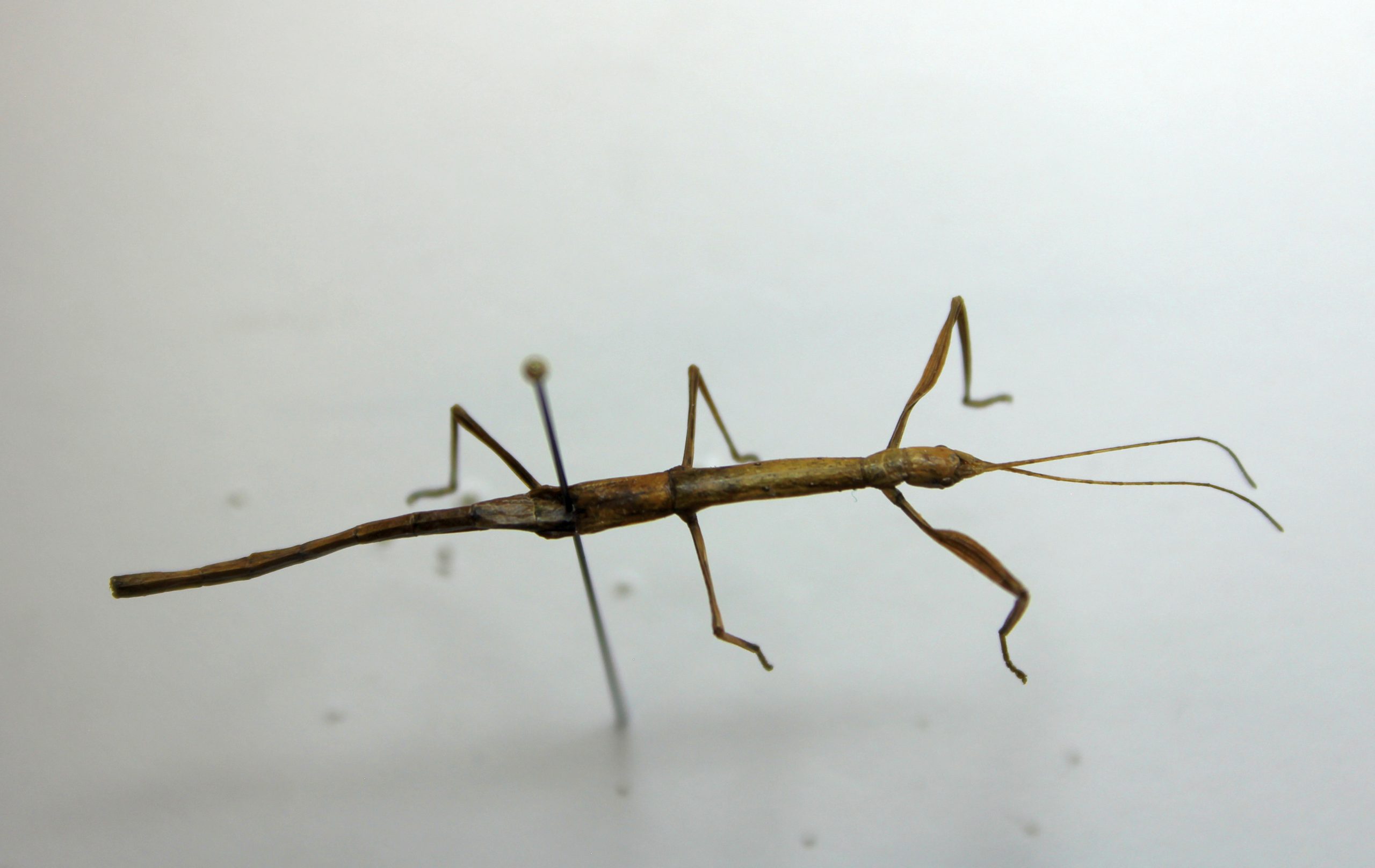42 Phasmatodea
Phasmatodea
The order Phasmatodea (“phasm” = “phantom”) is commonly known as the walkingsticks, stick insects, and leaf insects. There are about 2500 species in this order, most of which are tropical herbivores. They tend to be quite cryptic, mimicking vegetation and enhancing that mimicry through behaviours like posturing. An interesting group with a fascinating range of behaviours, two in particular are worth you investigating further: Timema species are native to the western United States and the genus is considered a basal group within the order; and the Lord Howe Island stick insect, or tree lobster, is a remarkable conservation success story, including a captive breeding program.
Reproduction in this order ranges from sexual to completely parthenogenic, and two species are estimated to have been parthenogenic for more than a million years. Development is paurometabolous, like all the orders we cover in this lab. Eggs are usually dropped on the ground. They often have a capitulum, a protein-rich structure that attracts ants, analogous to the elaiosomes on many plant seeds.
There is a single native species in Canada, the northern walkingstick (Diapheromera femorata), found occasionally in southern Ontario, Quebec, and Manitoba. Other species are usually encountered as part of the pet trade. These should be managed carefully as some species have the potential to establish and even become invasive.



Feedback/Errata